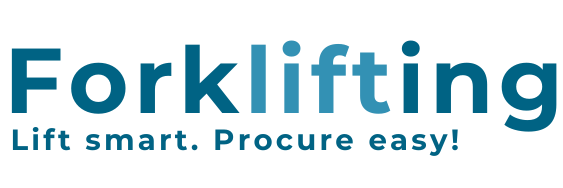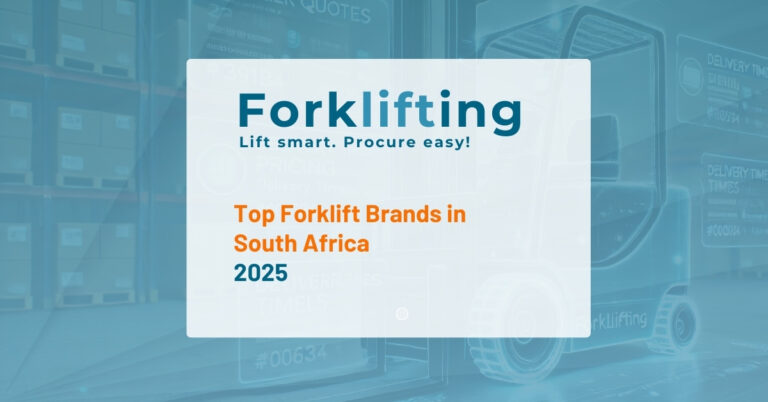Choosing the right forklift for your business is a crucial decision that impacts efficiency, safety, and overall operational costs. Whether you’re a procurement officer, operations manager, or business owner, selecting the wrong forklift can lead to increased maintenance expenses, productivity losses, and even safety risks.
In this guide, we’ll walk you through everything you need to know about choosing the best forklift for your business, including key considerations, forklift types, and expert tips to ensure you make the right investment.
1. Understanding Your Business Needs
Before diving into forklift specifications, start by analysing your specific business requirements. Consider the following:
- Load Capacity: What is the average and maximum weight your forklift will handle?
- Lift Height: Do you need a forklift that reaches high storage areas, or will a standard model suffice?
- Work Environment: Will the forklift be used indoors, outdoors, or both?
- Frequency of Use: Will the forklift be operating daily, or only for occasional tasks?
- Budget Constraints: Are you looking for a brand-new model or considering a used forklift for cost savings?
Understanding these factors will help you narrow down your options and prevent over- or under-spending.
Related: The Essential Procurement Checklist for Forklifts, Parts & Services
2. Types of Forklifts and Their Best Uses
There are various types of forklifts, each designed for specific applications. Here’s a breakdown of the most common forklift types:
A. Counterbalance Forklifts
Best for: General warehouse operations, indoor and outdoor use.
- Designed for balanced weight distribution.
- Available in electric, diesel, or LPG fuel types.
- Ideal for moving heavy loads in factories, warehouses, and loading docks.
B. Reach Trucks
Best for: High-rack warehouses.
- Designed for narrow aisles and high-reach shelving.
- Ideal for businesses that require vertical storage solutions.
C. Pallet Jacks (Manual and Electric)
Best for: Light-duty material handling in small spaces.
- Manual or battery-powered.
- Perfect for short-distance load transportation within warehouses.
D. Rough Terrain Forklifts
Best for: Construction sites, lumber yards, and outdoor applications.
- Equipped with heavy-duty tires for uneven and rough surfaces.
- Commonly used in outdoor logistics and agriculture.
E. Telehandlers
Best for: Construction and agriculture.
- Extended boom arm allows for lifting loads to greater heights.
- Suitable for multi-purpose applications beyond standard forklifts.
Pro Tip: Choose a forklift that fits your long-term business needs rather than just current requirements.
3. Choosing the Right Fuel Type: Electric vs. Diesel vs. LPG
The fuel type of your forklift can impact operating costs, environmental considerations, and efficiency.
| Fuel Type | Best For | Advantages | Considerations |
|---|---|---|---|
| Electric | Indoor use, warehouses | Lower maintenance, eco-friendly, quiet operation | Higher upfront cost, battery recharge time |
| Diesel | Outdoor, heavy-duty applications | High power output, long operational hours | Noisy, emissions restrictions in enclosed spaces |
| LPG (Gas) | Indoor & outdoor use | Versatile, quick refueling, moderate emissions | Fuel costs, requires proper ventilation |
4. Key Features to Consider Before Buying
When comparing forklift options, pay attention to these critical features:
- Mast Height & Lift Capacity – Ensure the forklift can handle your maximum load and lift height requirements.
- Turning Radius – Essential for businesses with narrow warehouse aisles.
- Attachments & Customization – Some forklifts allow for specialized attachments like clamps, rotators, or side shifters.
- Operator Comfort & Safety Features – Look for ergonomic seating, safety sensors, and easy controls to enhance efficiency and reduce workplace injuries.
- Maintenance Requirements – Compare expected maintenance costs and check if spare parts are readily available.
Related: Diesel vs Electric Forklifts: Choosing the Right Forklift for Your Operations
5. Should You Buy New or Used?
Purchasing a used forklift can be a great way to save money while still getting a high-quality machine. However, used forklifts require extra scrutiny to ensure they’re in good condition.
When to Choose a New Forklift:
✔️ You need a warranty and support from the manufacturer.
✔️ Your business relies on forklifts for continuous operations.
✔️ You want the latest safety and efficiency features.
When to Buy a Used Forklift:
✔️ You have a limited budget but still need a reliable machine.
✔️ The forklift will be used intermittently, not daily.
✔️ You can verify the service history and condition before purchasing.
Pro Tip: Always request forklift quotes from multiple dealers to compare prices and conditions before making a purchase.
Related: Buying a used forklift? How to get the best deal and avoid costly mistakes
6. Final Checklist Before Buying
Before finalizing your forklift purchase, use this quick checklist:
✔️ Have you assessed your business needs (load capacity, lift height, fuel type)? ✔️ Have you compared different forklift types and their best uses?
✔️ Have you considered both new and used forklifts?
✔️ Have you requested multiple forklift quotes to compare prices?
✔️ Have you reviewed maintenance costs and service availability?
If you can check off all these points, you’re ready to invest in the right forklift for your business!
Find the Perfect Forklift at Forklifting.co.za
At Forklifting.co.za, we make it easy to find the best forklifts for sale, whether you’re looking for a new or used machine. Simply submit your request for quote once and receive mulitple forklift supplier quotes for you to compare to make informed purchase decisions.
By following this guide, you can ensure that you choose a forklift that meets your operational needs, improves efficiency, and offers the best value for your investment.
Got any questions? Contact us for support.
Read More: Related: Top Forklift Brands in South Africa, 2025

